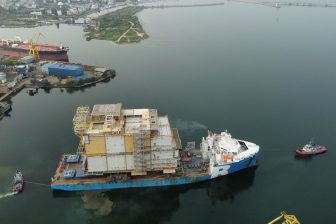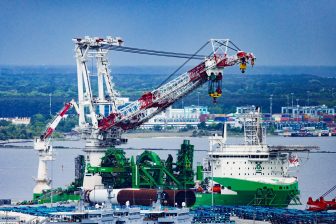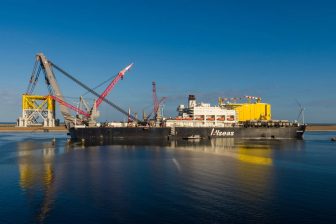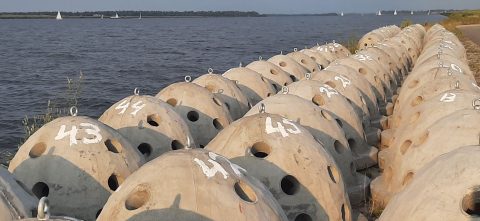
‘Windplanblauw’: wind turbines and ‘fish hotels’
The construction of Windplanblauw in the IJsselmeer has been given the green light earlier this month, signifying that Ballast Nedam will replace outdated wind turbines with more modern and powerful ones. In addition to this, 200 ‘reef balls’ were installed in the IJsselmeer lake to protect local fauna and flora.
The new offshore wind turbines are part of Windplanblauw: an initiative of SwifterwinT and Vattenfall. This plan consists of a wind farm in the municipality of Dronten and Lelystad, where 74 wind turbines will be replaced by 61 larger turbines, with a capacity of over 335 MW. Of these, 37 will be located on land.
New wind turbines
Ballast Nedam will replace 28 outdated wind turbines of the current “Irene Vorrink” wind farm, with 24 modern and powerful turbines. To this end, they are designing and building the cofferdam structures for the turbine foundations, realising the park cabling and providing the connection to the substation. The new turbines in the IJsselmeer will be designed and built by Ballast Nedam, with Mammoet being co-responsible for the transport and installation of the turbines.
Since the project approval was announced on September 10th, design work is in full swing and work on the project site will start in March of this year. The wind farm is expected to be commissioned in the last quarter of 2023. Windplanblauw will be a substantial step towards the objectives of the 2013 Energy Agreement in the province of Flevoland.
Ronald de Geus, Managing Director Ballast Nedam Infra Projects, stated: “Windplanblauw is an important project for Ballast Nedam, because it gives us a concrete part in the energy transition. (…) This is a good match because we specialise in designing and building wind turbine foundations and park cables. We do this in particular on ‘nearshore’ sites that are located in hard-to-reach places, have a complex foundation or are in the surf near a beach.”
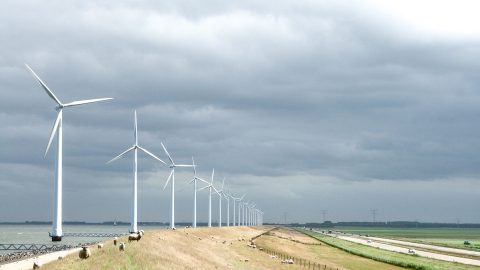
“Fish Hotels”
According to Ewoud Visser, a consultant at Doggerland Offshore, Windplanblauw is taking the flora and fauna in the area into account during its construction. As such, 200 ‘reef balls’ were installed in the IJsselmeer lake by Doggerland Offshore as a subcontractor to Ballast Nedam. These concrete structures have openings in their walls and floor plates, offering shelter to local fauna: “The purpose is that fish can safely shelter in these balls in effect, so they are Fish Hotels.” he stated in a LinkedIn post.
The reef balls were transported from the factory by truck to an unloading quay on the Ketelmeer. After a period of storage, a crane ship, the Sam-Sam, was mobilised. The Sam-Sam is an inland motor-freight vessel sailing under the Dutch, flag measuring 63 metres in length and 7.4 metres in width. The ship was able to load out approximately 75 reef balls at a time, which were placed in predetermined places, in clusters along the IJsselmeer dyke. Additionally, a special lifting hook was used, which allowed for safe lifting while still being opened underwater without divers or extra wires.
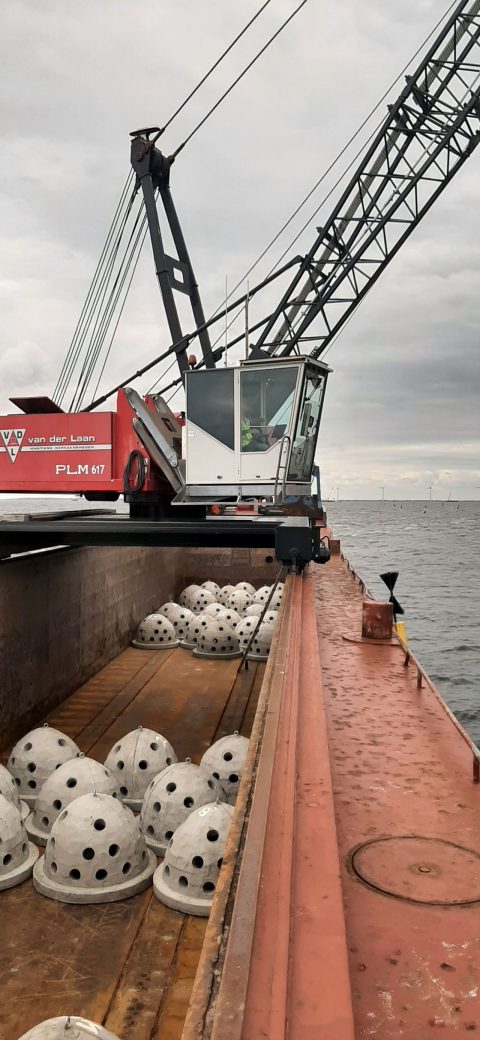
You just read one of our premium articles free of charge
Register now to keep reading premium articles.


